Assistive technology guide: Low cost hardware for access

Overview
This document details how low-cost hardware adaptations and customisations can make computers, tablets, and other devices easier for people with disabilities to use. The considered adaptations include:
Low-cost platforms for digital access
- Android Tablets
- Chromebooks
- MP3 Players
- Televisions as screens
- Chromecast
Low-cost peripherals for digital access
- Headsets/Microphones
- Amplifiers
- Keyboards
- Keyguards
- Alternatives to Mice
- Touchpads
- Swich access – Including interfaces
- Document cameras
In addition, we will explain a little about how to “tune” a keyboard or a pointing device to be more suitable for an individual’s needs.
Introduction
Access to digital content does not have to be expensive and difficult to acquire. Some simple consumer technologies can be extremely valuable in providing a platform upon which digital content can be easily accessed, and even quite low-cost low specification android tablets and handsets offer a range of access feature to support learners with a disability. Knowing where to find and how to use both platforms and peripherals can help inform planning and build a sustainable approach to the provision of assistive and accessible technologies in schools and classrooms.
Low-cost platforms for digital access
In many countries the use of Android as an operating system is widespread and may account for 80% of all smartphone and tablet ownership. Teachers may have much greater experience with an android device than a Window PC, which helps them to feel confident in introducing the technology to learners.
Android
Android devices feature a range of access features that are helpful, but it is important to check which features are installed and supported on any specific device. Manufacturers may choose to disable some features, or not to allow access to Google Play preferring to distribute products through their own marketplace.
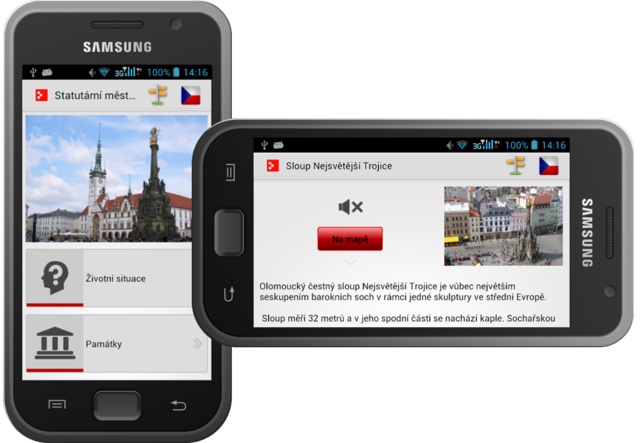
Figure 1 Samsung Phone and Tablet running Android
Some of the described features work only with Android 10 and up.
Embedded screen reader - Talkback
Talkback is a screen reader embedded in android devices which allows blind and low vision learners to use a device using touch and spoken feedback. Talkback describes any actions performed by the user and speaks aloud alerts and notifications. Talkback also incorporates a simple braille keyboard which allows leaners to use 6 fingers on the screen to enter 6-dot braille. Talkback braille keyboard is available in Unified English Braille, Spanish, and Arabic.
Some learners may only want such spoken feedback at specific times. Select-to-speak allows learners to select items onscreen to hear them read or described aloud, or to point the device camera at something in the real world, like pictures or text, and hear them read or described aloud with OCR. This feature is available in English and in many other languages (French, Spanish, Dutch, Finnish, Turkish, Romanian, etc.).
Changing the display
Learners can alter the display and font size changing the size of icons and items onscreen. This can be helpful not only for those with low vision but also with print impairments such as dyslexia. Similarly, Magnification can help someone to temporarily zoom or magnify the screen, and Contrast and colour options that can help by adjusting contrast or colours, using high-contrast text, dark theme, colour inversion or colour correction.

Interaction controls
Android devices also include features that allow you to interact and control the device in a range of ways. Voice Access is an app which controls the device with spoken commands. Learners can use their voice to open apps, navigate and edit text hands-free. Switch Access lets them interact with Android devices using one or more switches instead of the touchscreen. With this activated they can use a switch or keyboard to control their device.
Plugging in a keyboard or pointing device (see below) directly to the device will allow learners to use a mouse or rollerball to control the pointer or a physical keyboard if the onscreen keyboard is not suitable. Android has a built-in pointer that appears when a mouse is connected. As soon as it appears, you can move the mouse, left or right click to single-tap, and long-click to long-tap. Keyboards and pointing devices can be connected to an Android device in multiple ways: via Bluetooth, wireless, through an adapter or a USB, etc.

Figure 2 Android device for AAC with a switch connected
If learners find that some routine actions are time consuming to repeat, then Action Blocks make the actions easier with customisable buttons on the Android home screen.
Braille display support - BrailleBack
With the BrailleBack app, you can connect a refreshable braille display to your Android device via Bluetooth. BrailleBack works with the Talkback screen reader to provide a combined speech and braille experience. As you use BrailleBack, screen content appears on your braille display, and you can navigate and interact with your device using the keys on the display. You can also input text using the braille keyboard
Hearing - Audio and on-screen text
For those with a hearing impairment or who are deaf there are several features that are helpful. Captions can be automatically enabled for videos and there are several caption preferences (language, text and style) for most your devices. Additionally, you can use Live Caption which automatically captions speech on your device.
Live Transcribe can capture speech and sound and transcribe them to text on the screen. Sound Notifications help those who are deaf be aware of what is happening around them such as when a smoke alarm activates beeps or a doorbell rings. Some users also find Sound Amplifier helpful with wired or Bluetooth headphones to filter, augment and amplify the sounds in the environment or on the device. This may also work with some hearing aids and learners can pair hearing aids with the device to hear more clearly.
Chromebooks
Although currently less widely used outside of the US, Chromebooks running Chrome OS and the Google suite of applications do offer more “PC style” devices at a lower cost. It should be noted that many Chromebooks have small on-board storage and are designed to access content online or in the cloud.

Figure 3 Chromebook running Chrome OS
The devices offer a range of accessibility functions similar to those found in Android devices, which include:
- Screen reader / Text-to-speech Turn on the screen reader or Select-to-speak.
- Display: Turn on high contrast mode or screen magnifier, or change screen resolution or text size.
- Keyboard tuning: Turn on sticky keys, on-screen keyboard, keyboard focus highlighting, keyboard repeat rate, or word prediction. Learn how to type with your voice.
- Mouse and touchpad: Turn on navigation buttons in tablet mode, automatic clicking, tap dragging, cursor highlighting, or change the cursor's size or colour.
- Audio: Play all sounds together through all speakers or play sound on start-up.
- Chrome Live Caption: Turn on Chrome Live Captions for media played on your Chrome browser.
Both Android and Chromebooks offer accessible devices at a price point that may be affordable. However, it is also possible to use some consumer technologies to support learner needs with a little creativity and imagination
MP3 Players
Low-cost generic MP3 Players can be a very good way of giving access to audio files to those for whom traditional text is a barrier. Low-cost players often have very simple controls which give a tactile response when pressed. These can be very easy for someone with low vision to manage. Using text-to-mp3 conversion, such as RoboBraille, means that Word or Pdf documents can be converted to MP3 and loaded onto the player to listen to later.

Medion MP3 player
Figure 4 Example of MP3 player
Televisions as large monitors
Monitor sizes on laptops are often quite small – 15” is quite usual and Chomebooks tend to be even smaller. As large monitors are very expensive, many devices can be directly connected to a TV with an HDMI cable. This will display what is onscreen many times larger than on the monitor. Such a set up can be further enhanced with a document camera or even a webcam that can be pointed at documents and displayed on the TV; this can be a valuable way of offering access to printed documents for learners with low vision.
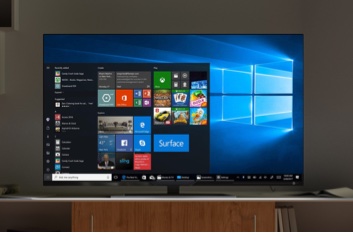
Figure 5 Large TV screen showing Windows OS
Google Chromecast
Where a Device such as a tablet or phone does not have a suitable connection such as HDMI, a Chromecast device for less than $50 will allow the screen of the device to be displayed on the television. More expensive than a cable, it is a valuable alternative to expensive CCTV systems to provide a basic level of access through magnification
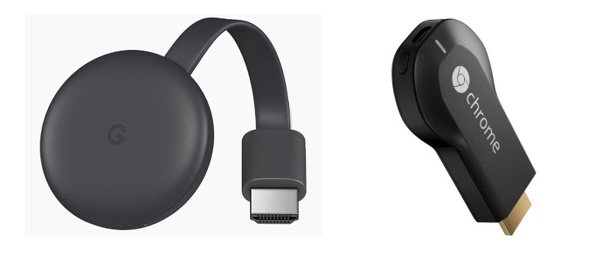
Figure 6 Examples of Chromecast devices
Low-cost peripherals for digital access
There are many apps that make devices more accessible for people with a disability. But in addition, there are a range of hardware add-ons that will increase access, improve ease of use and support inclusion.
Headsets
A headset or earphones can be a very useful addition to many solutions for many learners. They can be used by those who are hard of hearing to listen to audio at a higher volume and amplified; they can help block out environmental sounds for those that are easily distracted, and they make it easier for those using text-to-speech to listen to what is spoken aloud without disturbing those around them.


Such headsets fall into different groups, all are useful but come with different costs. Where possible, it is a good idea to try to get noise cancelling headsets to reduce background noise. Headsets can be in ear or over ear, and different people find some in ear systems uncomfortable. However they are very popular amongst young people and are very discreet.
Headsets can also be wired or wireless. There are benefits to wireless sets in that they do not require the device to be always in the users’ hands, and in-ear sets are especially private and adapted to mitigate any anxieties that learners might have.
For persons with certain types of hearing impairments an interesting option (though sometimes more expensive) can be the bone conduction headphones, which allow you to hear sound through the vibration of the bones of your face (jaw bones and cheek bones). This means that the sound waves are bypassing the outer and middle ear (where the eardrum is located) and directly stimulating the inner ear (hearing organ). Bone conduction headphones use this principle to allow people with hearing loss to hear music, podcasts, or phone calls. They send the sound through your bones straight to the inner ear, allowing many possible hearing problems to be bypassed entirely. These headsets also allow to listen to, for example, a phone, a music player or the radio, without removing the hearing aids and therefore still being able to hear external sounds such as traffic, other people talking, your child starting to cry, etc.

Figure 7 Example of bone conduction headphones
Amplifiers and speakers
Similarly, wired or Bluetooth speakers can be a good way of boosting sound output for group activities or where the sound from a device needs to be heard by a second person such as if a phone or tablet is being used as a communication aid. Similarly, this works well for listening to stories in groups as the larger speakers transmit all frequencies more clearly. A Bluetooth set of speakers work well in these settings as it can be shared or mounted as the individual prefers.
Customized input and pointing devices
Both mice and keyboards can be “tuned” to the needs of the learner. The “ease of access centre” or accessibility options are available in most operating systems. They include features that make using a keyboard or mouse easier. Some of the most common ones include Filter Keys, Sticky Keys and Mouse keys.
When activated, Filter Keys prevents brief and repeated keystrokes being registers as a keypress. Sticky Keys is a Microsoft Windows accessibility feature that causes modifier keys to remain active, even after they were pressed and released, making it easier to use keyboard shortcuts. The Sticky Keys feature helps alleviate some stress on your fingers by not having to press and hold keys to use keyboard shortcuts, and it makes it easier to use keyboard shortcuts for persons with limited dexterity. You only need to press and release a modifier key, like Ctrl, Alt, or Shift, then press the next key for the keyboard shortcut. For example, instead of having to press Ctrl+Alt+Del at the same time, you can press each of the keys individually to perform the same function. A numeric keypad allows you to move the mouse around the screen using the arrow keys. All are useful for those with a degree of impairment and can be used with an alternative keyboard as described below.
Keyboards
A standard keyboard is supplied with most computers but the “one size fits all” approach is not ideal for everyone. There are many types of alternative keyboard available, including those with large print or contrast keys for people with low vision, and alternative layouts such as “DVORAK” and frequency organized keyboards, which may work well for some people where the standard layout is hard to remember and use.
Compact keyboards
For persons with reduced manual dexterity alternative keyboards can be useful. Compact keyboards are smaller keyboards like those found on a laptop, with no numeric keypad. The smaller size allows it to be positioned easily on a desk or tray and any pointing device can be kept closer making it easier to control. A good example is the Cherry keyboard.

Figure 8 CHERRY G84-4100 Compact-Keyboard
Large print keyboards
Alternatively, others find a largest keyboard such as the “BigKeys[i]” helpful. This is a standard keyboard but with bigger keys that are very clearly labelled with larger prints. These keyboards also come with high contrast prints, which can be helpful for persons with visual impairments.
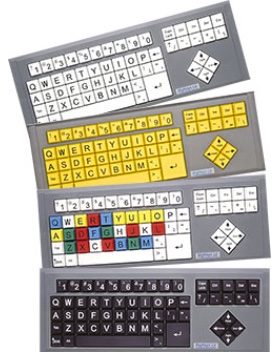
Figure 9 Example of large print big key and high contrast keyboards
Keyguards
Keyboard Keyguards can be applied to standard, compact or large keyboards, in order to minimize typing errors. A keyguard is a plastic or metal cover that matches to a specific keyboard. These come in various types and sizes. The guard sits on top of the keyboard and the user types the keys through holes that are above each key. As a result, persons with reduced dexterity can press a key without accidentally pressing other keys at the same time. Keyguards are also useful for people who get tired when typing, as they can rest their hands on the keyguard without pressing any of the keys.

Figure 10 Example of keyboard keyguard for standard keyboard

Figure 11 Example of keyboard keyguard for compact keyboard
Alternative key disposition
A Frequency Organized Keyboard customizes the layout of letters with the most frequent letters that appear in the user's language placed in an arrangement that reduces the number of steps it takes to type that letter. A study found that these keyboards that adapt to a user’s frequently used letters are 30-40% more efficient than the QWERTY layout.
An example is the Dvorak keyboard: This keyboard has all vowels and punctuation marks on the left side and consonants on the right side. The layout places the most commonly used letters in the middle row, also known as the home row, where they’re easier to reach, and the less commonly used letters on the bottom row. (This layout is intended for the English language—for other European languages, letter frequencies, sequences, and bigrams differ).
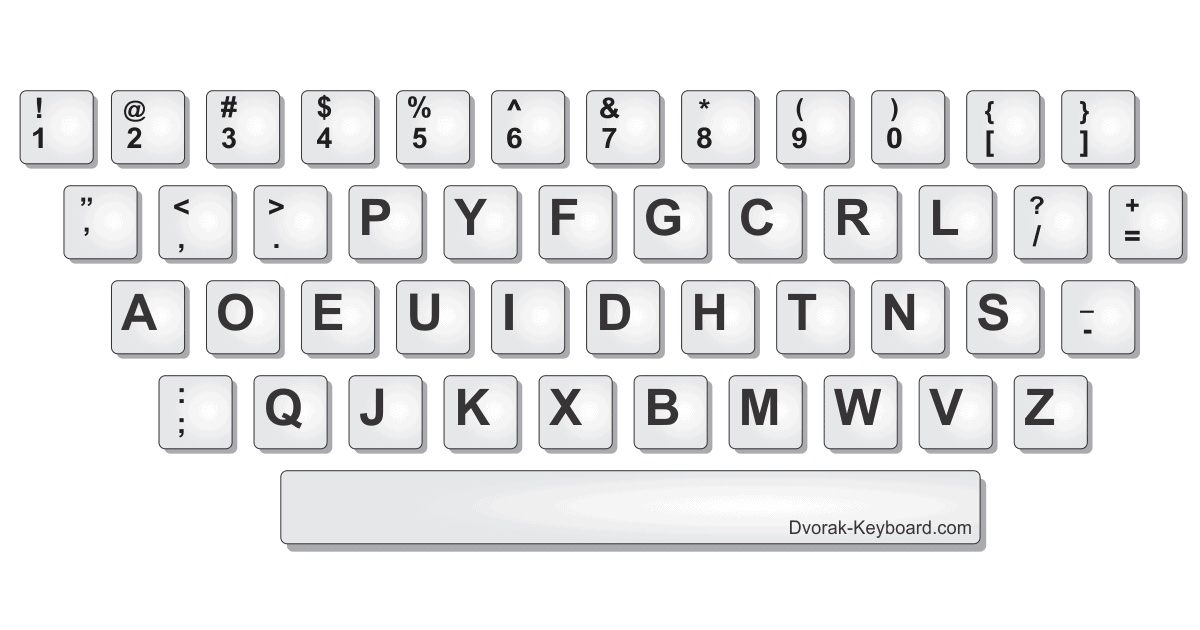
Figure 12 The DVORAK keyboard
Keyboards for left-handed users
A left-handed keyboard allows left-handed users to more naturally and ergonomically utilize their natural lefty strengths. Theses lefty keyboards place the numeric keypad and directional arrow keys to the left of the alphabetic keyboard keypad. The left-handed keyboard also works well with all ambidextrous mice.
Figure 13 Left-Handed Keyboard
Alternative keyboards
The half-keyboard (Matias Half Keyboard & Half-QWERTY Pro Keyboard) is a compact keyboard which combines greatly reduced dimensions, limited number of keys, and a variety of key combinations that allow, for example to change the function of the keys by pressing the “space” bar. This keyboard can be very practical for persons using one hand only, but is also reduces potential wrist pain because all actions (scroll, select text, type corrections, or make deletions) can be done without moving the hand back and forth between keyboard and mouse.

Figure 14 Functioning of half keyboard
Mice and pointing devices
As well as alternative keyboards, some learners find that an alternative to a regular mouse is helpful and these include:
Ergonomic Mice
Mice with a different shape, size and weight making it much more comfortable to use.

Figure 15 Examples of ergonomic mice
In particular, vertical mice allow for a different position of the hand and the wrist, which can alleviate pain or simply be more comfortable for some people.

Figure 16 Example of vertical mouse
Trackballs / Rollerballs
These usually don’t need as accurate finger and wrist movements, and often the mouse button is separate from the movement of the ball, making it easier to hold the cursor over items while clicking. Trackballs come in many sizes, including ones that can be operated by a single finger. For people with limited fine motor ability, a trackball with a larger ball may be useful. Since the trackball remains in a stationary position on the desk or mounted on a stand, it can be a good option for a person with a limited range of motion.

Figure 17 Example of trackball mouse
Joysticks
Joysticks require less control than trackball and often different tops can be fitted to suit different types of grip.
Touchpads
A touchpad refers to the mouse pad that you usually find at the front of a laptop. Some people find the small movements required to operate these easier than the standard mouse.

Figure 18 Example of touchpad with selection buttons
Switch and switch interface
For those with more complex physical needs, simple switches are extremely valuable as a way of having control over a device. They are usually used with an onscreen keyboard where each key or group of keys is “scanned” automatically, and the learner presses a simple switch to select a group of individual key. This process is much faster when the on-screen keyboard offers word prediction to allow a whole word to be selected as well as letters or keys.
Switches are cheap to buy or make, they can be designed to respond to different types of movement or pressure, including sipping or blowing from the mouth. Switches can be mounted onto a wheelchair or other seating and positioned around the body wherever an individual has consistent and controlled movements including fingers, arms, chin, head or a foot.
Most switches require a simple interface box that connects the switch to the device and these are available commercially. The open-source interface “Fabi” is available at http://www.asterics-academy.net/tools/fabi and includes both software and design files.
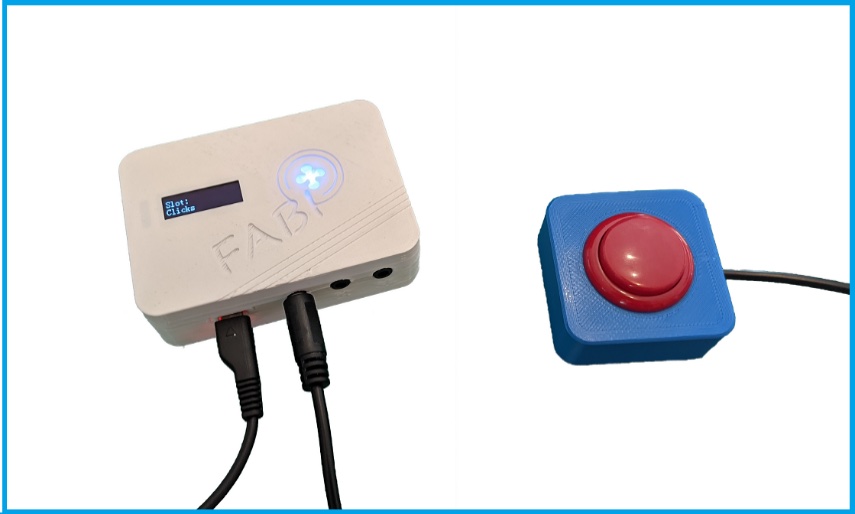
Figure 19 Simple switch and interface for computer or tablet
Document cameras/Visualizers
Document cameras are a useful way to offer magnification or text scanning for people with low vision. The document camera is usually held on a stand and focuses on a book or a printed document page. Through the document camera this can either be viewed on a large monitor or screen by the learner to read the text, or a photo can be taken of the page that can be converted to text and read aloud.
Such document cameras can be relatively expensive at around $100. But some of their functionality can be offered by a good quality USB webcam which can be placed on a stand or tripod and mounted to focus on a page. Models change regularly and it may be necessary to try one or more models to get sufficient quality for day to day use.

Figure 20 Document camera showing magnified image on a computer screen
Conclusions
Low-cost hardware is changing the ways in which access and inclusion is delivered in classrooms. Both open licensed and commercial products are available that replicate much of the functionality of very expensive dedicated devices and address individual needs in an effective and cost effective manner.
Low-cost hardware goes hand-in-hand with software and accessibility features that can enable access and inclusion in education. Read more about assistive software options. You can also refer to the catalog for more examples of hardware for access. It is important to consider the context in which low-cost accessible technology and hardware will be used. You can learn more about the accessible digital learning ecosystem and the role assistive hardware can play in implementation.
[i] http://www.bigkeys.com/what.asp